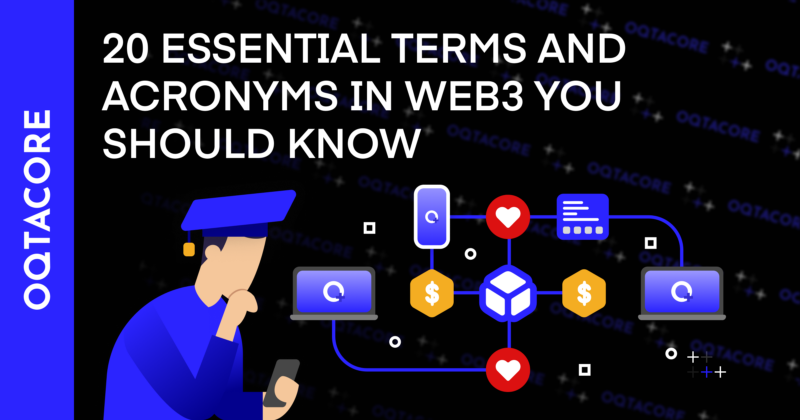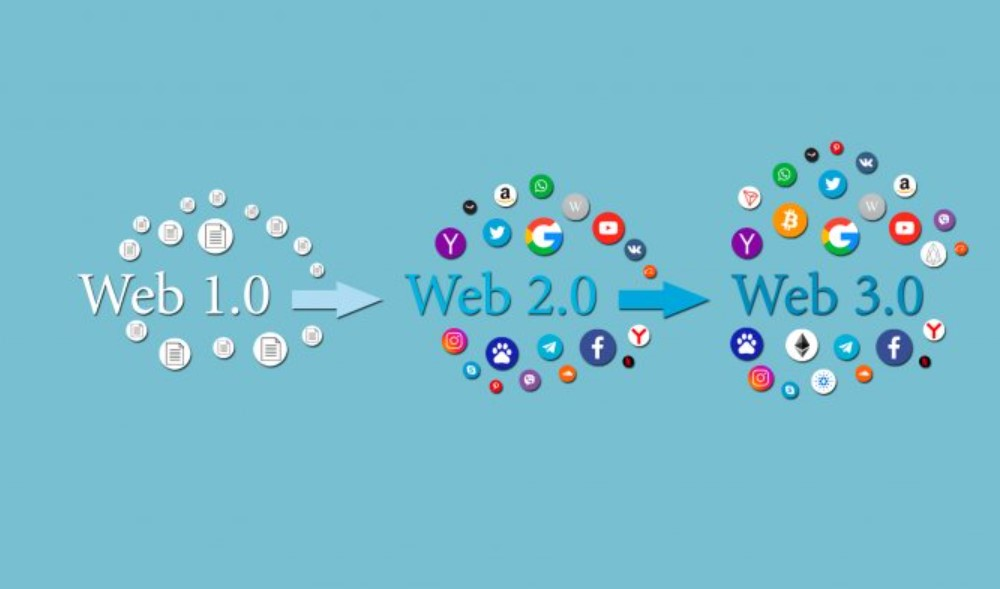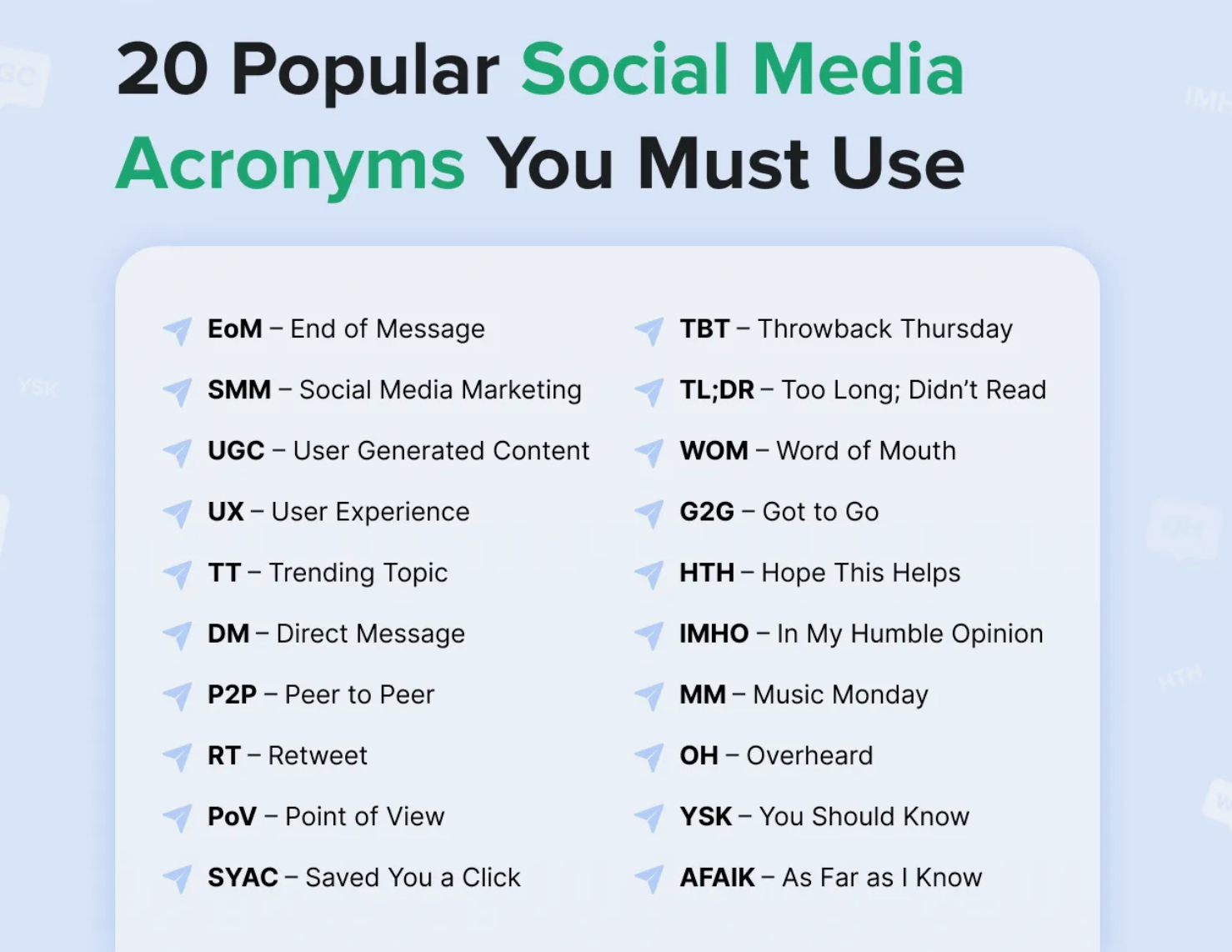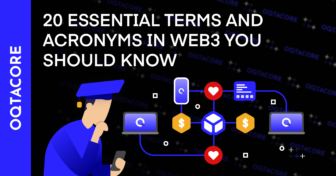
20 essential terms and acronyms in the Web3 space, helping newcomers understand key concepts like blockchain, DeFi, NFTs, and smart contracts.
The Web3 landscape constantly changes, introducing many new terms that may overwhelm those just starting out. Whether you’re a fan, a developer, or an investor, it’s essential to understand the fundamental concepts to navigate this revolutionary space.
Below is a list of 20 important terms and acronyms anyone engaging with Web3 should know.

1. Blockchain
A decentralized, distributed ledger that records data across multiple computers. Once information is entered, it can’t be altered, making it a fundamental technology behind Web3.
2. DeFi (Decentralized Finance)
A collection of financial services such as borrowing, lending, and trading that function on blockchain platforms, cutting out intermediaries like traditional banks.
3. NFT (Non-Fungible Token)
A digital token representing ownership of unique assets such as art, music, or videos. Each token is distinct and verified on a blockchain.
4. DAO (Decentralized Autonomous Organization)
A blockchain-based organization is one where decision-making is done through a collective voting system rather than a centralized leadership structure.
5. Smart Contract
An automated contract with predefined terms encoded directly in software. These contracts self-execute when specified conditions are met, eliminating the need for intermediaries.
6. Ethereum (ETH)
A widely used decentralized platform that supports the development of smart contracts and decentralized applications (dApps), allowing users to interact within a peer-to-peer environment.
7. Gas Fees
Transaction fees are paid to blockchain network participants for validating transactions and executing smart contracts, especially on Ethereum and similar platforms.
8. dApp (Decentralized Application)
A software application that runs on a decentralized network, typically built on blockchain technology, and operates without centralized control.
9. Staking
The act of locking cryptocurrency to support network activities like validating transactions in return for rewards, thereby securing the blockchain network.
10. Layer 2
A secondary framework that operates on top of a blockchain to improve scalability and speed and reduce fees without altering the base layer (often associated with Ethereum).

11. PoW (Proof of Work)
A consensus mechanism where participants must solve complex mathematical problems to validate transactions, primarily used by Bitcoin and similar networks.
12. PoS (Proof of Stake)
A consensus model is where users validate transactions, create new blocks based on the coins they hold, and are willing to “stake” as collateral.
13. Wallet
A digital tool used for storing and managing cryptocurrencies, private keys, and other assets. Popular wallets include MetaMask and hardware wallets like Ledger.
14. Tokenomics
The economic principles and incentives behind issuing and circulating tokens within a blockchain project include supply, demand, and governance models.
15. ICO (Initial Coin Offering)
A method of raising capital in which new cryptocurrency tokens are sold to the public, similar to an IPO (Initial Public Offering), is typically used by early-stage projects.
16. IDO (Initial DEX Offering)
A token sale is conducted on decentralized exchanges (DEXs), allowing projects to raise funds directly from the community without traditional intermediaries.
17. LP (Liquidity Provider)
A participant who contributes assets to liquidity pools on decentralized exchanges, enabling trades and earning transaction fees in return.
18. Oracles
Services that provide external data to blockchains allow smart contracts to interact with real-world events, such as financial market data or weather conditions.
19. Interoperability
The ability for different blockchain networks to communicate and share data enables users and developers to interact seamlessly across various platforms.
20. Web3
A new generation of the internet is built around decentralized technologies, where users have control over their data, digital assets, and interactions, as opposed to the centralized systems of Web2.
Conclusion
Web3 is poised to redefine how we interact with the internet, offering decentralized, user-owned alternatives to traditional systems.
Whether you’re developing, investing, or simply exploring, understanding these 20 terms and acronyms will give you the foundational knowledge to thrive in the Web3 space. Keep learning and stay ahead of the curve!
Explore more:
